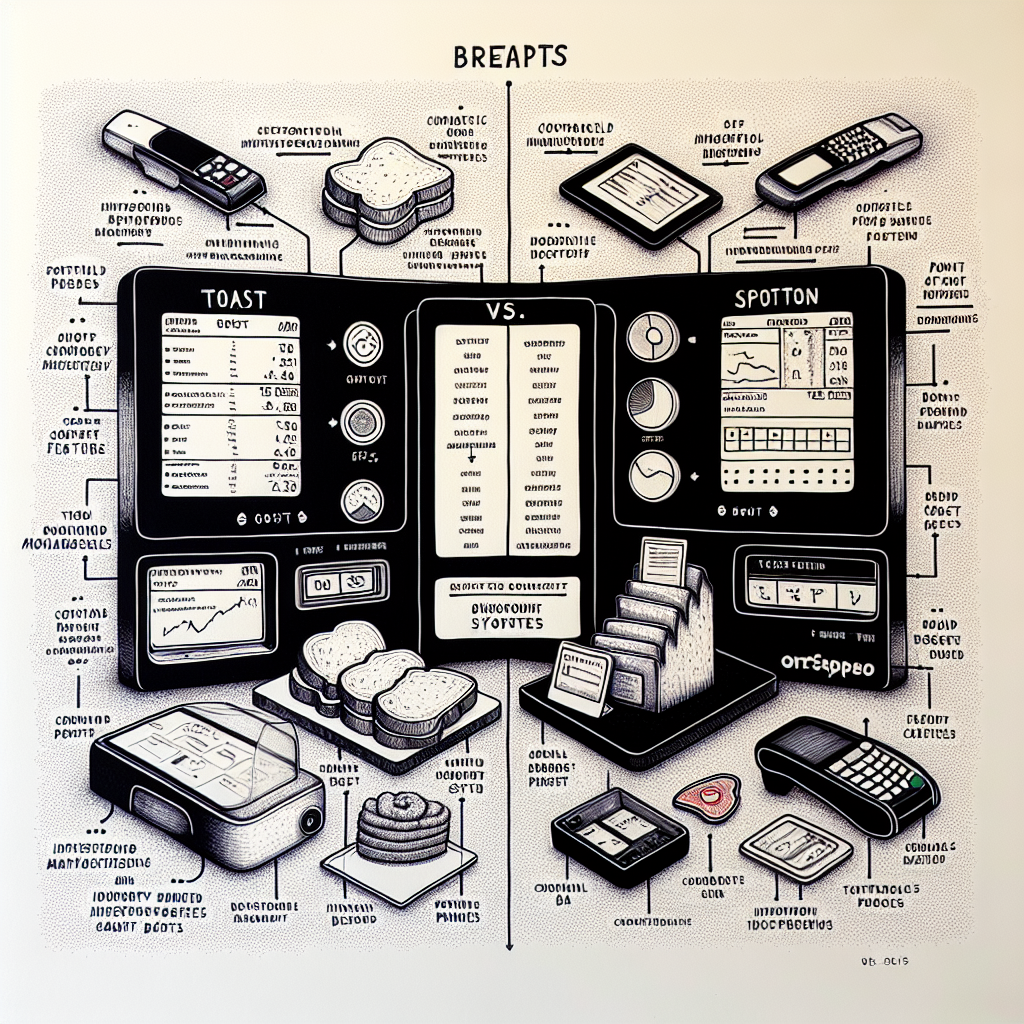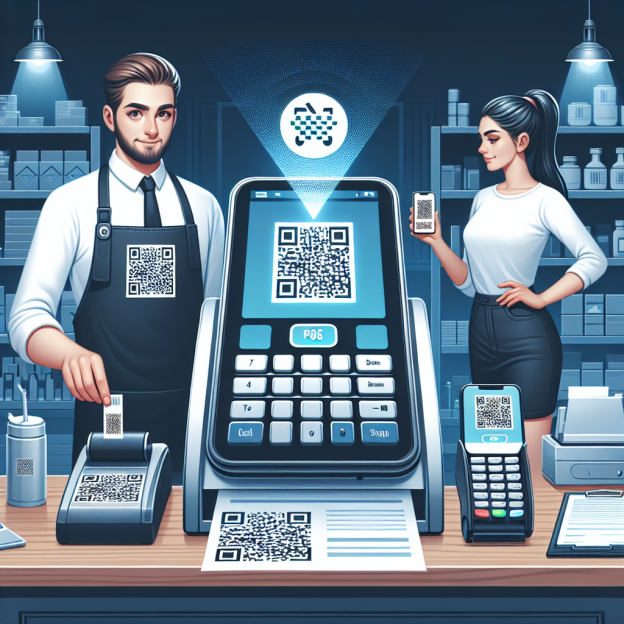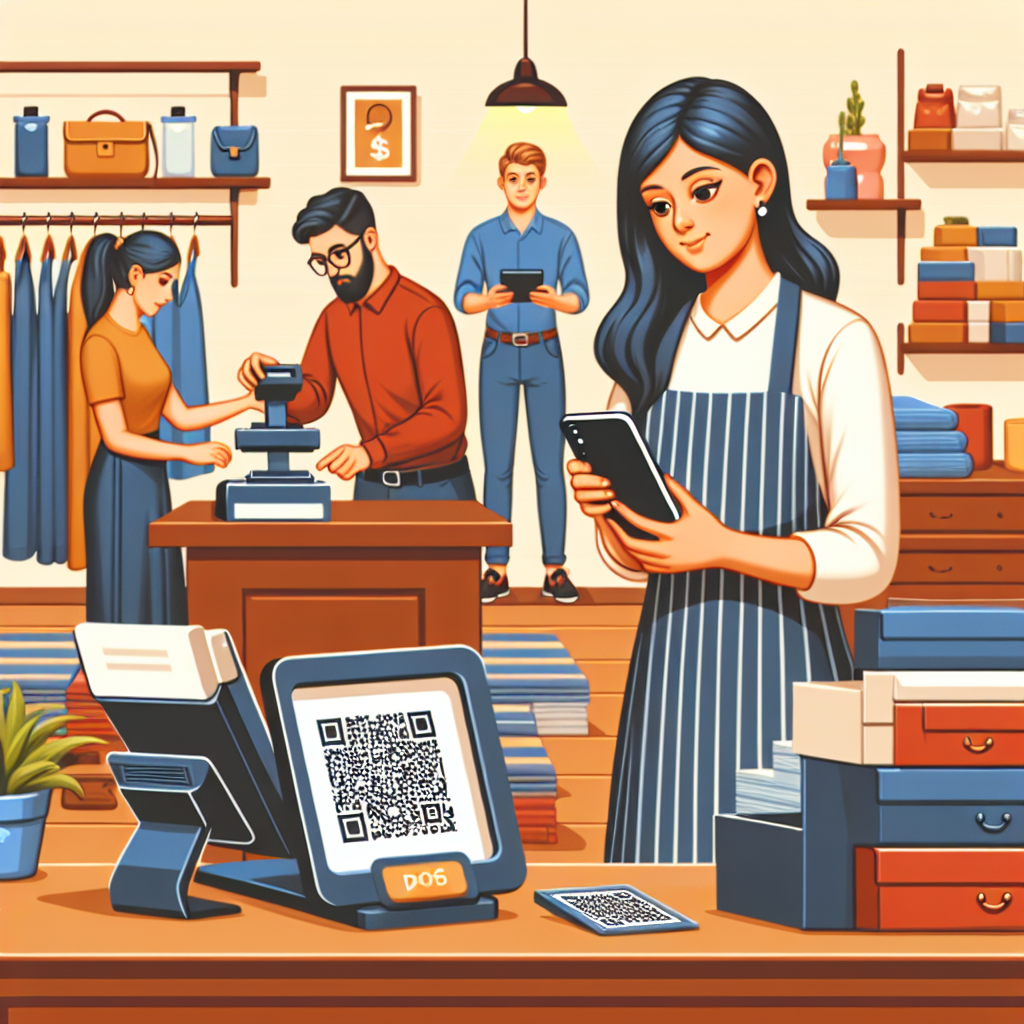In the rapidly evolving landscape of retail and hospitality, having an efficient and reliable Point of Sale (POS) system is crucial for success. A comprehensive understanding of POS hardware is essential for businesses aiming to streamline operations, enhance customer experience, and drive growth. This guide delves into the key components and considerations of POS hardware, offering valuable insights into selecting the right equipment tailored to your business needs. From traditional cash registers to modern touchscreen terminals, barcode scanners, receipt printers, and mobile POS solutions, this guide covers the essentials to help you make informed decisions. Whether you’re a small business owner or managing a large retail chain, understanding the intricacies of POS hardware can significantly impact your operational efficiency and bottom line.
Understanding The Basics Of POS Hardware Systems
In the rapidly evolving landscape of retail and hospitality, understanding the basics of Point of Sale (POS) hardware systems is crucial for businesses aiming to enhance operational efficiency and customer satisfaction. At its core, a POS system is the central component of a business’s transaction process, integrating hardware and software to facilitate sales, inventory management, and customer relationship management. As businesses increasingly adopt digital solutions, the role of POS hardware becomes even more significant, serving as the physical interface between the business and its customers.
To begin with, the primary component of any POS system is the terminal, which acts as the central hub for processing transactions. Modern POS terminals are often sleek, touchscreen devices that combine the functionality of traditional cash registers with advanced computing capabilities. These terminals are designed to be user-friendly, allowing staff to quickly process sales, apply discounts, and manage returns with minimal training. Furthermore, many POS terminals are now cloud-based, enabling real-time data synchronization across multiple locations and providing business owners with valuable insights into sales trends and inventory levels.
In addition to the terminal, a comprehensive POS hardware setup typically includes peripherals such as barcode scanners, receipt printers, and cash drawers. Barcode scanners are essential for businesses with extensive product catalogs, as they streamline the checkout process by quickly and accurately capturing product information. This not only reduces human error but also enhances the overall customer experience by minimizing wait times. Receipt printers, on the other hand, provide customers with a tangible record of their purchase, which is particularly important for returns and exchanges. Meanwhile, cash drawers remain a staple in many retail environments, offering a secure place to store cash transactions.
Another critical component of POS hardware systems is the payment processing device. With the rise of contactless payments and digital wallets, businesses must equip themselves with card readers that support a variety of payment methods, including credit and debit cards, NFC payments, and mobile payment apps. This flexibility is vital in catering to diverse customer preferences and ensuring a seamless checkout experience. Moreover, advanced payment processing devices often come with built-in security features, such as encryption and tokenization, to protect sensitive customer data and reduce the risk of fraud.
As businesses continue to embrace technology, the integration of POS hardware with other systems has become increasingly important. For instance, many modern POS systems can be linked with inventory management software, allowing for automatic stock level updates and reorder alerts. This integration not only helps prevent stockouts and overstock situations but also provides valuable data for demand forecasting and strategic planning. Additionally, POS systems can be connected to customer relationship management (CRM) platforms, enabling businesses to track customer purchase history and tailor marketing efforts accordingly.
In conclusion, understanding the basics of POS hardware systems is essential for businesses seeking to optimize their operations and deliver exceptional customer service. By investing in the right combination of terminals, peripherals, and payment processing devices, businesses can streamline their transaction processes, enhance data security, and gain valuable insights into their operations. As technology continues to advance, staying informed about the latest developments in POS hardware will be key to maintaining a competitive edge in the dynamic retail and hospitality sectors.
Essential Components Of A Comprehensive POS Setup
In the rapidly evolving landscape of retail and hospitality, a comprehensive Point of Sale (POS) system is indispensable for efficient operations and enhanced customer experiences. At the heart of this system lies the POS hardware, a crucial component that ensures seamless transactions and data management. Understanding the essential components of a comprehensive POS setup is vital for businesses aiming to optimize their operations and stay competitive.
To begin with, the POS terminal is the central hub of any POS system. It serves as the interface between the business and its customers, facilitating transactions and data processing. Modern POS terminals are often equipped with touchscreens, providing an intuitive and user-friendly experience for both staff and customers. These terminals are designed to handle a variety of payment methods, including credit and debit cards, mobile payments, and contactless transactions, thereby catering to diverse customer preferences.
In addition to the terminal, a reliable cash drawer is a fundamental component of a POS setup. Despite the increasing popularity of digital payments, cash transactions remain prevalent in many sectors. A sturdy cash drawer ensures the secure storage of cash, coins, and receipts, and is typically connected to the POS terminal for automatic opening during transactions. This integration not only streamlines the checkout process but also enhances security by minimizing manual handling of cash.
Moreover, a high-quality receipt printer is essential for providing customers with transaction records. Thermal printers are commonly used in POS systems due to their speed and efficiency. They produce clear, smudge-free receipts, which are crucial for maintaining accurate records and facilitating returns or exchanges. Additionally, some businesses may opt for printers that support customized receipts, allowing them to include branding elements or promotional messages, thereby enhancing customer engagement.
Another critical component is the barcode scanner, which significantly accelerates the checkout process by automating the entry of product information. Barcode scanners reduce human error and improve inventory management by ensuring accurate data capture. They come in various forms, including handheld, countertop, and integrated scanners, each suited to different business needs and environments. The choice of scanner depends on factors such as the volume of transactions and the layout of the retail space.
Furthermore, businesses should consider incorporating a customer-facing display into their POS setup. This component allows customers to view transaction details in real-time, promoting transparency and trust. It also provides an opportunity for businesses to display promotional content or loyalty program information, thereby enhancing the overall customer experience.
In addition to these core components, businesses may also integrate peripheral devices such as scales for weighing products, particularly in grocery or bulk goods environments. These scales are often connected to the POS system to ensure accurate pricing based on weight, further streamlining the checkout process.
Finally, it is important to consider the connectivity and integration capabilities of the POS hardware. A comprehensive POS setup should seamlessly integrate with other business systems, such as inventory management and customer relationship management (CRM) software. This integration facilitates real-time data sharing, enabling businesses to make informed decisions and optimize their operations.
In conclusion, a comprehensive POS setup is comprised of several essential hardware components, each playing a vital role in ensuring efficient and secure transactions. By carefully selecting and integrating these components, businesses can enhance their operational efficiency, improve customer satisfaction, and ultimately drive growth in an increasingly competitive market.
Choosing The Right POS Hardware For Your Business Needs
When selecting the appropriate Point of Sale (POS) hardware for your business, it is crucial to consider various factors that align with your specific operational needs. The right POS hardware can significantly enhance the efficiency of your transactions, improve customer satisfaction, and streamline your business processes. Therefore, understanding the components and functionalities of POS systems is essential for making an informed decision.
To begin with, it is important to recognize the core components of a POS system, which typically include a terminal, a cash drawer, a receipt printer, a barcode scanner, and a card reader. Each of these components plays a vital role in ensuring smooth and efficient transactions. The terminal, often referred to as the brain of the POS system, is where the software operates and transactions are processed. When choosing a terminal, consider factors such as processing speed, user interface, and compatibility with your existing software.
In addition to the terminal, the cash drawer is another critical component. It is essential to select a cash drawer that is durable and secure, as it will store your cash and other valuables. The size and design of the cash drawer should also be considered, ensuring it fits seamlessly into your checkout area. Furthermore, the receipt printer is indispensable for providing customers with transaction records. Thermal printers are commonly preferred due to their speed and low maintenance requirements, but it is important to ensure that the printer is compatible with your POS software.
Moreover, a barcode scanner is a valuable tool for businesses that manage inventory and require quick and accurate product identification. When selecting a barcode scanner, consider the types of barcodes you will be scanning and the environment in which it will be used. For instance, a wireless scanner may be beneficial for businesses with a large sales floor, while a wired scanner might suffice for smaller, more confined spaces.
Additionally, the card reader is an essential component in today’s increasingly cashless society. With the rise of contactless payments and mobile wallets, it is crucial to choose a card reader that supports various payment methods, including EMV chip cards, NFC payments, and magnetic stripe cards. This ensures that you can accommodate the diverse payment preferences of your customers.
Beyond the individual components, it is also important to consider the overall integration of the POS system with your business operations. A well-integrated system can provide valuable insights into sales trends, inventory levels, and customer preferences, enabling you to make data-driven decisions. Therefore, ensure that the POS hardware you choose is compatible with your existing software and can be easily integrated with other business tools you may use, such as accounting software or customer relationship management systems.
Furthermore, consider the scalability of the POS hardware. As your business grows, your POS system should be able to expand and adapt to your changing needs. This might involve adding new terminals, integrating additional payment methods, or upgrading software capabilities. Therefore, selecting hardware that offers flexibility and scalability can save you time and resources in the long run.
In conclusion, choosing the right POS hardware for your business involves careful consideration of various factors, including the functionality of individual components, integration capabilities, and scalability. By taking the time to assess your specific business needs and understanding the key features of POS systems, you can make an informed decision that enhances your operational efficiency and supports your business growth.
The Role Of POS Hardware In Enhancing Customer Experience
In today’s fast-paced retail environment, the role of Point of Sale (POS) hardware in enhancing customer experience cannot be overstated. As businesses strive to meet the ever-evolving expectations of consumers, the integration of advanced POS systems has become a pivotal factor in delivering seamless and efficient service. At the heart of this transformation lies the hardware that powers these systems, which plays a crucial role in shaping the overall customer journey.
To begin with, modern POS hardware is designed to streamline transactions, thereby reducing wait times and improving service efficiency. This is particularly important in high-traffic retail environments where speed and accuracy are paramount. By utilizing state-of-the-art components such as high-speed processors and robust memory, POS systems can handle complex transactions swiftly, minimizing delays and ensuring that customers are not left waiting. This efficiency not only enhances customer satisfaction but also allows businesses to serve more customers in less time, ultimately boosting sales and revenue.
Moreover, the versatility of contemporary POS hardware contributes significantly to an improved customer experience. With the advent of mobile POS devices, sales associates can now engage with customers directly on the sales floor, providing personalized service and immediate assistance. This mobility allows for a more interactive shopping experience, as employees can offer product recommendations, check inventory, and process payments without the need for customers to queue at a traditional checkout counter. Such personalized interactions foster a sense of connection and trust between the customer and the brand, which is essential for building long-term loyalty.
In addition to mobility, the integration of advanced features such as contactless payment options and biometric authentication further enhances the customer experience. As consumers increasingly prioritize convenience and security, the ability to offer diverse payment methods is a significant advantage. Contactless payments, for instance, not only expedite the checkout process but also provide a hygienic alternative to cash transactions, a consideration that has gained prominence in the wake of global health concerns. Similarly, biometric authentication adds an extra layer of security, reassuring customers that their personal information is protected.
Furthermore, the aesthetic and ergonomic design of POS hardware can also impact customer perceptions. Sleek, modern devices that blend seamlessly with the store’s interior create a cohesive and professional image, which can influence how customers perceive the brand. Ergonomically designed hardware ensures that both employees and customers can interact with the system comfortably, reducing the likelihood of errors and enhancing the overall shopping experience.
Transitioning from the physical to the digital, the data collected through POS systems offers invaluable insights into customer behavior and preferences. By analyzing this data, businesses can tailor their offerings to better meet customer needs, thereby enhancing satisfaction and loyalty. For instance, understanding purchasing patterns allows retailers to optimize inventory management, ensuring that popular items are always in stock. Additionally, personalized marketing campaigns can be developed based on customer data, providing targeted promotions that resonate with individual shoppers.
In conclusion, the role of POS hardware in enhancing customer experience is multifaceted, encompassing efficiency, versatility, security, design, and data-driven insights. As technology continues to evolve, businesses that invest in cutting-edge POS solutions are better positioned to meet the demands of modern consumers, ultimately fostering a more satisfying and engaging shopping experience. By prioritizing the integration of advanced POS hardware, retailers can not only streamline operations but also build stronger relationships with their customers, paving the way for sustained success in an increasingly competitive market.
Future Trends In POS Hardware Technology
As the retail and hospitality industries continue to evolve, the role of Point of Sale (POS) hardware is becoming increasingly pivotal. The future of POS hardware technology is poised to transform the way businesses operate, offering enhanced efficiency, security, and customer experience. To understand the trajectory of these advancements, it is essential to explore the emerging trends that are shaping the future of POS systems.
One of the most significant trends in POS hardware technology is the integration of cloud-based systems. Cloud technology offers numerous advantages, including real-time data access, scalability, and reduced maintenance costs. By leveraging cloud-based POS systems, businesses can streamline operations and improve decision-making processes through instant access to sales data and analytics. This shift towards cloud integration is expected to continue, as more businesses recognize the benefits of a centralized, easily accessible platform.
In addition to cloud integration, the rise of mobile POS (mPOS) systems is another trend that is gaining momentum. Mobile POS systems allow businesses to process transactions anywhere within their premises, providing flexibility and enhancing the customer experience. This mobility is particularly beneficial for businesses with limited space or those that require a more dynamic sales environment, such as pop-up shops or outdoor events. As mobile technology continues to advance, mPOS systems are expected to become more sophisticated, offering features such as contactless payments and integration with other business applications.
Moreover, the incorporation of artificial intelligence (AI) and machine learning into POS hardware is set to revolutionize the industry. AI-driven POS systems can analyze customer data to provide personalized recommendations, optimize inventory management, and even predict future sales trends. This level of insight allows businesses to tailor their offerings to meet customer demands more effectively, ultimately driving sales and enhancing customer satisfaction. As AI technology becomes more accessible, its integration into POS systems will likely become a standard feature.
Security is another critical aspect of future POS hardware technology. With the increasing prevalence of cyber threats, businesses must prioritize the protection of customer data. Advanced security features, such as end-to-end encryption and biometric authentication, are becoming essential components of modern POS systems. These technologies not only safeguard sensitive information but also instill confidence in customers, who are becoming more aware of data privacy issues. As security concerns continue to grow, the development of robust, secure POS systems will remain a top priority for businesses and technology providers alike.
Furthermore, the trend towards sustainability is influencing the design and functionality of POS hardware. As businesses strive to reduce their environmental impact, there is a growing demand for energy-efficient and eco-friendly POS solutions. This includes the use of recyclable materials, energy-saving components, and the reduction of paper waste through digital receipts. By adopting sustainable practices, businesses can not only reduce their carbon footprint but also appeal to environmentally conscious consumers.
In conclusion, the future of POS hardware technology is characterized by several key trends, including cloud integration, mobile solutions, AI-driven insights, enhanced security, and sustainability. These advancements are set to redefine the retail and hospitality landscapes, offering businesses new opportunities to improve efficiency, security, and customer engagement. As these technologies continue to evolve, staying informed about the latest developments will be crucial for businesses seeking to maintain a competitive edge in an increasingly digital world.
Cost-Effective Strategies For Upgrading Your POS Hardware
In today’s rapidly evolving retail landscape, upgrading your Point of Sale (POS) hardware is not merely a matter of keeping up with technological advancements; it is a strategic move that can significantly enhance operational efficiency and customer satisfaction. However, the financial implications of such an upgrade can be daunting for many businesses. Therefore, adopting cost-effective strategies is essential to ensure that the transition is both economically viable and beneficial in the long term.
To begin with, it is crucial to conduct a comprehensive assessment of your current POS system. This involves evaluating the existing hardware’s performance, identifying any limitations, and determining the specific needs of your business. By understanding the gaps in your current setup, you can make informed decisions about which components require upgrading. This targeted approach prevents unnecessary expenditures on hardware that may not significantly impact your operations.
Once you have identified the necessary upgrades, consider the option of phased implementation. Rather than overhauling the entire system at once, a gradual upgrade allows you to spread out costs over time. This strategy not only eases the financial burden but also minimizes disruptions to your business operations. For instance, you might start by replacing outdated terminals with newer models that offer enhanced features such as touchscreens and integrated payment processing. Subsequently, you can upgrade peripheral devices like barcode scanners and receipt printers as your budget allows.
Another cost-effective strategy is to explore leasing options for POS hardware. Leasing can be an attractive alternative to purchasing, especially for small to medium-sized businesses with limited capital. It provides the flexibility to access the latest technology without the upfront costs associated with outright purchases. Additionally, leasing agreements often include maintenance and support services, which can further reduce long-term expenses.
Furthermore, it is worth considering refurbished or certified pre-owned POS hardware. These options can offer significant savings while still providing reliable performance. Many reputable vendors offer warranties and support for refurbished equipment, ensuring that you receive quality products at a fraction of the cost of new hardware. However, it is essential to conduct thorough research and choose a trusted supplier to avoid potential pitfalls associated with second-hand equipment.
In addition to these strategies, leveraging cloud-based POS systems can also contribute to cost savings. Cloud-based solutions eliminate the need for extensive on-site hardware, as data is stored and processed remotely. This reduces the need for expensive servers and IT infrastructure, allowing businesses to allocate resources more efficiently. Moreover, cloud-based systems offer scalability, enabling businesses to easily adjust their operations as they grow.
Finally, it is important to stay informed about industry trends and technological advancements. Regularly attending trade shows, webinars, and industry conferences can provide valuable insights into emerging technologies and cost-effective solutions. Networking with other business owners and industry experts can also offer practical advice and recommendations based on real-world experiences.
In conclusion, upgrading your POS hardware does not have to be a financially overwhelming endeavor. By conducting a thorough assessment, implementing phased upgrades, exploring leasing and refurbished options, and considering cloud-based solutions, businesses can enhance their POS systems in a cost-effective manner. Staying informed about industry trends further ensures that your investment in POS hardware aligns with both current needs and future growth. Through these strategies, businesses can achieve a seamless transition that optimizes both operational efficiency and customer satisfaction.
Q&A
1. **What is POS hardware?**
POS hardware refers to the physical components used in a point-of-sale system, including devices like cash registers, barcode scanners, receipt printers, and payment terminals.
2. **Why is choosing the right POS hardware important?**
Selecting the appropriate POS hardware is crucial for ensuring efficient transaction processing, improving customer experience, and supporting business operations effectively.
3. **What are the key components of a POS system?**
Key components typically include a touchscreen monitor, barcode scanner, receipt printer, cash drawer, and a payment terminal or card reader.
4. **How does mobile POS hardware differ from traditional POS systems?**
Mobile POS hardware is portable and often uses tablets or smartphones, allowing for greater flexibility and mobility compared to traditional, stationary POS systems.
5. **What factors should be considered when selecting POS hardware?**
Considerations include compatibility with existing software, ease of use, durability, cost, and the specific needs of the business, such as mobility or high transaction volume.
6. **What are the benefits of integrating POS hardware with software?**
Integration allows for seamless data flow, improved inventory management, real-time sales tracking, and enhanced customer relationship management.The Comprehensive POS Hardware Guide provides essential insights into selecting and implementing the right point-of-sale hardware for businesses. It emphasizes the importance of understanding specific business needs, the compatibility of hardware components, and the integration with existing systems. The guide highlights key factors such as cost, scalability, durability, and user-friendliness, which are crucial for optimizing transaction efficiency and enhancing customer experience. By offering detailed comparisons and expert recommendations, the guide serves as a valuable resource for businesses aiming to make informed decisions in upgrading or establishing their POS systems, ultimately contributing to improved operational efficiency and customer satisfaction.




